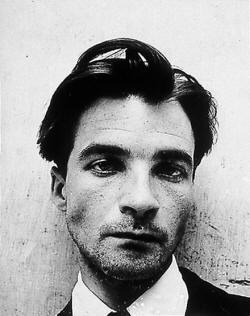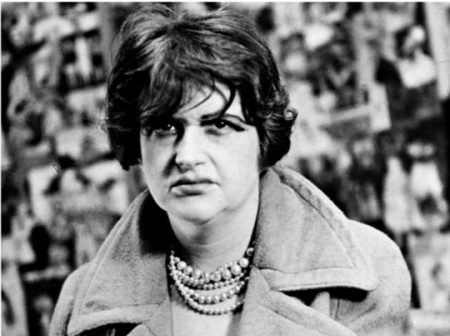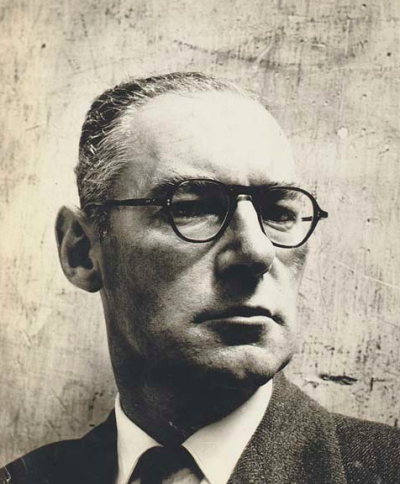

Partner Arthur Jeffress
Queer Places:
The Old Ship Hotel - part of The Cairn Collection, King's Road, Brighton BN1 1NR, UK
 John Deakin (8 May 1912 – 25 May 1972) was an English photographer, best
known for his work centred on members of
Francis Bacon's Soho inner circle. Deakin lived for a time with Soho's
bookseller David Archer. Bacon based a number of famous
paintings on photographs he commissioned from Deakin, including Portrait of
Henrietta Moraes,[1]
Henrietta Moraes on a Bed[2]
and Three Studies of Lucian Freud.[3]
John Deakin (8 May 1912 – 25 May 1972) was an English photographer, best
known for his work centred on members of
Francis Bacon's Soho inner circle. Deakin lived for a time with Soho's
bookseller David Archer. Bacon based a number of famous
paintings on photographs he commissioned from Deakin, including Portrait of
Henrietta Moraes,[1]
Henrietta Moraes on a Bed[2]
and Three Studies of Lucian Freud.[3]
From 1934 up to WWII Deakin lived with his partner Arthur Jeffress. Deakin also spent many years in Paris and Rome, photographing street scenes, but his only stable period of employment as a photographer were two stints of working for Vogue between 1947 and 1954. Deakin initially aspired to be a painter, and as his photographic career waned, Deakin devoted his time to painting in the 1960s, questioning the validity and status of photography as an art form. He showed little interest in curating and publicising his own work, so many of his photographs were lost, destroyed or damaged over time.[4]
A chronic alcoholic, Deakin died in obscurity and poverty, but since the 1980s his reputation has grown through monographs, exhibitions and catalogues.
It has recently been suggested, for instance, that a photograph dated to c.1945 by Francis Bacon’s friend John Deakin is not an ‘unknown woman’ but the artist cross-dressed. The caption provided at the time of writing by Getty Images is fascinating in itself: ‘portrait of an unidentified transvestite, possibly the artist Francis Bacon in drag, England pre-1945. The cleavage raises questions, but may be the result of photo manipulation’.

Probably Francis Bacon by John Deakin

JOHN DEAKIN
David Archer, Bookseller, 1952. 'One day in 1956,' recalled Bruce Bernard, 'I found myself hanging some remarkable photographs on the walls of the basement gallery under David Archer's bookshop in Greek Street. They were mostly of street scenes in Paris and there were a few extraordinary portraits. Together they seemed to me the most interesting photographs I had ever seen.... [Deakin] was a very close friend for a time of the quixotic and endearing David Archer (though sometimes as severe as in his marvellous portrait) who gradually sold his family estate to finance his bookshops....Archer was the first publisher of the poetry of Dylan Thomas, George Barker, David Gasgoyne and Dom Moraes....' (John Deakin: Salvage of a Photographer, Victoria & Albert Museum, 1985, p.6)
After being fired by Vogue for the second time, Deakin drifted from job to job and he enjoyed a retainer from The Observer until 1958.[9] He spent long periods in Rome and in Paris during the 1950s, specialising in street photography. In 1951, John Lehmann published a book of Deakin's Rome photographs, Rome Alive, with text by Christopher Kinmonth. Deakin spent many years trying unsuccessfully to publish a book of his Paris photographs, but they were exhibited in 1956 in David Archer's bookshop in Soho.[4] The catalogue accompanying the exhibition was written by Elizabeth Smart, a friend of Deakin. Smart's catalogue included the observation: "You certainly won't feel rested after a time in John Deakin's Paris. These pictures take you by the scruff of the neck and insist that you see. If you have never been to Paris, you will find it haunted when you arrive."[10]
Archer's bookshop, also in 1956, exhibited a second show, John Deakin's Rome.[11] These were the only photography exhibitions Deakin achieved in his lifetime, and they attracted some critical acclaim. In The Times, Colin MacInnes reviewed the Paris photos: "Mr Deakin sees one side of Alice's looking glass and the infinite mysteries that lie behind it.[12] Art critic David Sylvester wrote : "The pictures of Paris by John Deakin present a vision that is profoundly personal and profoundly strange, a vision which confounds and undermines all notions of where inanimate ends and animate takes over."[11]
Deakin returned to painting in the mid-1950s, but with little success. Daniel Farson commented that "Deakin's artistic career had one consistency: the moment success came near he veered off in another direction." Deakin subsequently abandoned painting for making collages and sculptures in the 1960s.[13]
Deakin, nevertheless, continued to photograph many of the major figures in the Soho art scene during the 1950s and 1960s, including Francis Bacon, Lucian Freud, Frank Auerbach and Eduardo Paolozzi. Though the two had a difficult personal relationship, Bacon held Deakin's work in high regard. After Deakin's death, Bacon described him as "the best portrait photographer since Nadar and Julia Margaret Cameron."[14] Because Bacon "famously preferred photographic reference over live models for his painting",[15] Deakin took many portraits on commission for Bacon, which the artist later used as source material for some of his most famous images. One of the most notable was Portrait of Isabel Rawsthorn Standing in a Street in Soho, 1967. Deakin's photos of George Dyer, Muriel Belcher and Henrietta Moraes have also been associated with Bacon's paintings of these sitters.[16]
In February 2012, Bacon's 1963 Portrait of Henrietta Moraes, based on Deakin's photo, sold for £21.3 million.[1][17] Deakin's photo of Lucian Freud supplied one of the sources for Bacon's 1969 painting Three Studies of Lucian Freud.[3] This work was sold in 2013 for $142 million,[18] making it one of the most expensive paintings ever sold. Deakin's photos of Freud also inspired a series of paintings by Jasper Johns, Jasper Johns: Regrets, which were exhibited at the Museum of Modern Art in 2014.[15]
Freud and Bacon appeared as two of the Eight Portraits, an unpublished manuscript of photos and writings which was discovered after Deakin's death. In this work, Deakin wrote of Bacon: "He's an odd one, wonderfully tender and generous by nature, yet with curious streaks of cruelty, especially to friends. I think that in this portrait I managed to catch something of the fear which must underlie these contradictions in his character."[16]
In 1972, Deakin was diagnosed with lung cancer, and underwent an operation to have it removed. While recuperating, he died of a heart attack while staying in the Old Ship Hotel, Brighton. In hospital, he had named Bacon as his next of kin, forcing the painter to identify the body. "It was the last dirty trick he played on me", Bacon remarked.[8]
My published books: